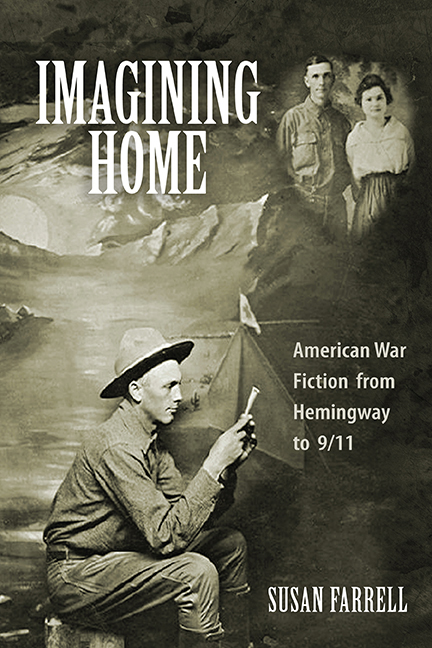Book contents
- Frontmatter
- Contents
- Acknowledgments
- Introduction
- 1 “Isn't It Pretty to Think So?”: Ernest Hemingway's Impossible Homes
- 2 A “Nation of Two”: Constructing Worlds through Narrative in the Work of Kurt Vonnegut
- 3 “It Wasn't a War Story. It Was a Love Story”: Tim O'Brien and the Ethics of Home
- 4 “A Hole in the Middle of Me”: Shattered Homes in Post-9/11 Literature
- Afterword
- Notes
- Works Cited
- Index
- Frontmatter
- Contents
- Acknowledgments
- Introduction
- 1 “Isn't It Pretty to Think So?”: Ernest Hemingway's Impossible Homes
- 2 A “Nation of Two”: Constructing Worlds through Narrative in the Work of Kurt Vonnegut
- 3 “It Wasn't a War Story. It Was a Love Story”: Tim O'Brien and the Ethics of Home
- 4 “A Hole in the Middle of Me”: Shattered Homes in Post-9/11 Literature
- Afterword
- Notes
- Works Cited
- Index
Summary
BY THE END OF SEPTEMBER 2001, New York City was awash in poetry. People pasted poems on lampposts, bus shelters, and subway stations; they taped poems to apartment windows and passed then around by hand; they mailed poems to newspapers and to fire and police stations; they organized poetry readings to raise funds for 9/11 victims; they created websites and e-mail Listservs to circulate poetry. The sheer volume of poetry responding to 9/11 was astounding, notoriously prompting one New York City fire chief, in his thank-you for the food, blankets, and flowers sent in by concerned citizens, to plead, “but please, no more poetry” (Johnson and Merians ix). Nor did this outpouring of words stop after the immediate shock of the attacks wore off. By February 2002, more than twenty-five thousand poems had been published on the website poems.com, while the website Poets against the War received nearly thirty thousand poems by the time it was closed to submissions in 2010, and more than ten anthologies of 9/11 poetry were published in the years immediately following the attacks (Metres; Keniston 659; Luger 184). Stories, essays, and popular songs addressing the events of September 11 appeared not long after the initial poetry. Television shows such as The West Wing and Third Watch scripted episodes to specifically focus on 9/11, and the first documentaries and feature films were released in 2002. The first novels to address 9/11 began to appear in 2003; they ranged from those in which the events were fairly peripheral, such as American science-fiction writer William Gibson's Pattern Recognition, which depicts the main character's father as disappearing during the attacks, to works such as French writer Frédéric Beigbeder's Windows on the World, set in the restaurant atop the North Tower where the terrorist attacks take center stage. Clearly, the impulse to transform the trauma of 9/11 and its aftermath into literary art, to explore the attacks through the written word, was profound and deep seated. Yet, at the same time, the attacks reignited questions concerning the relationship between trauma and literature that have long persisted and that arose especially in relation to Holocaust writing.
- Type
- Chapter
- Information
- Imagining HomeAmerican War Fiction from Hemingway to 9/11, pp. 1 - 15Publisher: Boydell & BrewerPrint publication year: 2017



